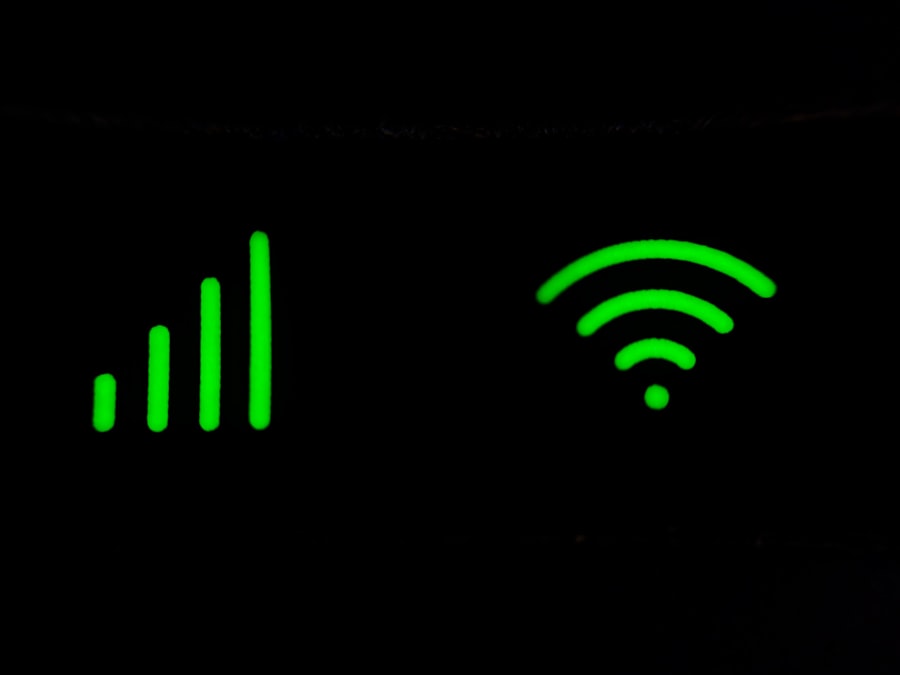The Case Against Universal High Speed Internet

Economic inequality has emerged as a pressing issue in contemporary society, characterized by the uneven distribution of wealth and resources among individuals and groups. This disparity is often measured through various metrics, such as income levels, wealth accumulation, and access to opportunities. In many developed nations, the gap between the rich and the poor has widened significantly over the past few decades.
For instance, according to a report by the Organization for Economic Cooperation and Development (OECD), the income of the top 10% of earners is now nearly nine times that of the bottom 10%. This stark contrast not only highlights the financial divide but also raises questions about social mobility and the overall health of the economy. The implications of economic inequality extend beyond mere statistics; they permeate various aspects of life, including access to quality education, healthcare, and even political influence.
Wealthier individuals often have greater access to resources that can enhance their quality of life, such as private schooling, advanced medical care, and influential social networks. Conversely, those at the lower end of the economic spectrum frequently find themselves trapped in a cycle of poverty, with limited opportunities for advancement. This systemic inequality can lead to social unrest and a sense of disenfranchisement among marginalized communities, further exacerbating tensions within society.
Key Takeaways
- Economic inequality is exacerbated by digital technology, as it widens the gap between the rich and the poor.
- The environmental impact of digital technology is significant, with e-waste and energy consumption being major concerns.
- Privacy concerns are raised due to the collection and use of personal data by digital platforms and companies.
- Access to education and healthcare is both improved and hindered by digital technology, depending on factors such as affordability and infrastructure.
- The digital divide creates disparities in access to technology and internet connectivity, further widening existing inequalities.
Environmental Impact
Deforestation and Biodiversity Loss
For example, deforestation for agricultural expansion not only threatens biodiversity but also disrupts carbon sequestration processes essential for mitigating climate change. The Amazon rainforest, often referred to as the “lungs of the Earth,” has seen alarming rates of deforestation, with estimates suggesting that over 17% of its area has been lost in the last 50 years due to logging and farming activities.
Cities like Beijing and New Delhi frequently experience hazardous air quality levels, which pose serious health risks to their populations.
Long-term Consequences and the Need for Sustainability
The consequences of environmental degradation are not limited to immediate health concerns; they also have long-term implications for food security, water availability, and overall ecosystem stability. As climate-related disasters become more frequent and severe, the need for sustainable practices and policies becomes increasingly urgent.
Privacy Concerns

In an age dominated by digital technology, privacy concerns have surged to the forefront of public discourse. The proliferation of smartphones, social media platforms, and Internet of Things (IoT) devices has created an environment where personal data is constantly collected, analyzed, and shared. Companies often track user behavior to tailor advertisements and improve services, but this practice raises significant ethical questions about consent and data ownership.
High-profile data breaches, such as those experienced by Facebook and Equifax, have further highlighted vulnerabilities in data security and the potential for misuse of personal information. The implications of these privacy concerns extend beyond individual users; they also affect societal norms regarding trust and transparency. As people become more aware of how their data is being used, there is a growing demand for stricter regulations governing data collection and usage.
The General Data Protection Regulation (GDPR) implemented by the European Union serves as a notable example of efforts to protect consumer privacy rights. However, enforcement remains a challenge, particularly in a globalized digital landscape where companies may operate across multiple jurisdictions.
Access to Education and Healthcare
| Country | Education Index | Healthcare Index |
|---|---|---|
| United States | 0.900 | 0.920 |
| Canada | 0.890 | 0.910 |
| United Kingdom | 0.880 | 0.900 |
Access to education and healthcare is a fundamental right that remains elusive for many individuals around the world. Disparities in educational opportunities often correlate with socioeconomic status, geographic location, and systemic discrimination. In many developing countries, children from low-income families may lack access to quality schools or educational resources, perpetuating cycles of poverty.
For instance, UNESCO reports that over 260 million children are out of school globally, with girls disproportionately affected due to cultural norms and economic barriers. Healthcare access presents similar challenges, particularly in regions where resources are scarce or unevenly distributed. In countries like the United States, healthcare disparities are evident along racial and economic lines; marginalized communities often face higher rates of chronic illnesses due to limited access to preventive care and healthy living conditions.
The COVID-19 pandemic further exposed these inequities, as vulnerable populations experienced higher infection rates and mortality due to pre-existing health disparities. Addressing these issues requires comprehensive policy reforms aimed at ensuring equitable access to both education and healthcare services.
Digital Divide
The digital divide refers to the gap between individuals who have access to modern information and communication technology (ICT) and those who do not. This divide is particularly pronounced in rural areas and among low-income populations, where access to high-speed internet can be limited or nonexistent. According to a report from the Federal Communications Commission (FCC), approximately 19 million Americans lack access to broadband internet service, which is essential for participating in today’s digital economy.
The consequences of this divide are far-reaching; individuals without reliable internet access may struggle to find employment opportunities, engage in online learning, or access essential services such as telehealth. During the COVID-19 pandemic, many schools transitioned to remote learning models, exacerbating existing inequalities as students from disadvantaged backgrounds faced significant barriers in accessing educational resources. Bridging this digital divide requires targeted investments in infrastructure, affordable internet plans, and digital literacy programs to ensure that all individuals can benefit from technological advancements.
Threat to Local Businesses

The rise of e-commerce giants has posed significant challenges for local businesses across various sectors. As consumers increasingly turn to online shopping platforms like Amazon for convenience and competitive pricing, small brick-and-mortar stores struggle to compete. This shift has led to a decline in foot traffic in many local communities, resulting in reduced sales for small businesses that rely on local patronage.
According to a report by the Institute for Local Self-Reliance (ILSR), independent retailers have seen their market share shrink significantly over the past two decades due to the dominance of large online retailers. The impact on local economies can be profound; small businesses often serve as vital sources of employment and community engagement. When these businesses close their doors due to competition from larger entities, it can lead to job losses and a decrease in community cohesion.
Furthermore, local businesses typically reinvest a larger portion of their revenue back into the community compared to national chains. As such, supporting local enterprises is crucial for fostering economic resilience and maintaining vibrant neighborhoods.
Government Control and Surveillance
Government control and surveillance have become increasingly prevalent in an era marked by rapid technological advancements. Many governments employ sophisticated surveillance systems under the guise of national security or public safety. For instance, countries like China have implemented extensive facial recognition technology in public spaces to monitor citizens’ movements and behaviors.
While proponents argue that such measures enhance security, critics raise concerns about civil liberties and the potential for abuse of power. The implications of pervasive surveillance extend beyond individual privacy; they can stifle dissent and limit freedom of expression. In authoritarian regimes, surveillance is often used as a tool to suppress opposition voices and maintain control over the populace.
In democratic societies, there is an ongoing debate about the balance between security measures and individual rights. The revelations by whistleblower Edward Snowden regarding mass surveillance programs conducted by the National Security Agency (NSA) sparked widespread outrage and calls for greater transparency and accountability in government practices.
Potential for Cyber Attacks
As society becomes increasingly reliant on digital infrastructure, the potential for cyber attacks poses significant risks to individuals, businesses, and governments alike. Cybercriminals employ various tactics—ranging from phishing schemes to ransomware attacks—to exploit vulnerabilities in systems for financial gain or political motives. High-profile incidents such as the Colonial Pipeline ransomware attack in 2021 underscored the potential consequences of inadequate cybersecurity measures; this attack disrupted fuel supplies across the Eastern United States and highlighted vulnerabilities within critical infrastructure.
The ramifications of cyber attacks extend beyond immediate financial losses; they can also erode public trust in institutions and compromise sensitive information. For instance, breaches involving personal data can lead to identity theft or financial fraud, impacting millions of individuals. As cyber threats continue to evolve in sophistication and scale, organizations must prioritize robust cybersecurity strategies that include employee training, regular system updates, and incident response plans to mitigate risks effectively.
The growing recognition of cybersecurity as a critical component of national security underscores the need for collaborative efforts between governments, private sectors, and individuals to safeguard against potential threats in an increasingly interconnected world.
FAQs
What are the reasons why all citizens shouldn’t have high speed internet?
There are several reasons why not all citizens have access to high speed internet, including infrastructure limitations, cost barriers, and lack of demand in certain areas.
What are the infrastructure limitations that prevent all citizens from having high speed internet?
In rural and remote areas, the cost of building and maintaining the necessary infrastructure for high speed internet access can be prohibitive. This can result in limited or no access to high speed internet for residents in these areas.
What are the cost barriers that prevent all citizens from having high speed internet?
High speed internet service can be expensive, and not all citizens may be able to afford the monthly fees. Additionally, the cost of installing and maintaining the necessary equipment for high speed internet access can be a barrier for some individuals and communities.
Why is there a lack of demand for high speed internet in certain areas?
In some areas, there may be a lack of demand for high speed internet due to factors such as low population density, older demographics, or limited economic opportunities. This can make it less financially viable for internet service providers to invest in the necessary infrastructure.
What are the potential consequences of not having high speed internet for all citizens?
Without access to high speed internet, individuals and communities may face limitations in education, healthcare, economic opportunities, and social connectivity. This can contribute to a digital divide and exacerbate existing inequalities.







